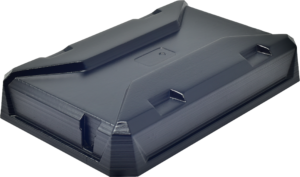Revolutionizing Connected Car Technology: How Smart PowerSM Technology is Changing the Game
The telematics industry is undergoing a transition towards the increased utilization of battery-powered devices as a substitute for those requiring a 12-volt wired installation with a connection to a constant source of power. This shift is being driven by high installation costs and the increased complexity and risks associated with installing “hard-wired” devices in vehicles equipped with keyless systems and electric vehicles.
As an example, using hard-wired devices in electric vehicles are troublesome for the following reasons:
- Electric vehicles’ electrical architecture is different from conventional vehicles so installing a telematics device without proper understanding or expertise can risk damaging their electrical components
- Electric vehicles sometimes don’t have available, or easy access to, a constant 12-volt source of power
While battery components are often overlooked while evaluating IoT device performance, poor performing batteries can hinder the performance and reliability of telematics systems by hampering their ability to gather and transmit the crucial data companies need to run their daily operations.
Background
Batteries are the heartbeat of our modern world, powering essential functions like how people connect and communicate, find information, transport people and goods, and power homes and buildings. Batteries are especially critical in powering a wide range of commercials applications. The most common battery technologies used for commercial applications include:
| Technology | Applications (examples) |
| Lithium-ion (Li-ion) | Consumer electronics, electric vehicles (EVs), renewable energy storage systems, and IoT devices |
| Lead-Acid | Backup power systems, forklifts, and off-grid solar power systems |
| Nickel-Cadmium (NiCd) | Emergency lighting systems, aviation, and some medical equipment |
| Nickel-Metal Hydride (NiMH) | Hybrid EVs, cordless power tools, portable medical devices, and consumer electronics |
Lithium-ion (Li-ion) batteries, with their high energy density, long cycle life, lightweight design, and relatively low self-discharge rates, have emerged as the most dominant battery technology used for commercial applications.
Global Li-ion battery production capacity is forecast to increase eightfold by 2027. Li-ion battery production is dominated by China with 79% market share followed by U.S. with 6% market share.
Despite their increasing popularity, Li-ion batteries have several key noteworthy limitations including:
- Safety Concerns: While Li-ion batteries are generally safe, they can be prone to thermal runaway and overheating under certain conditions. Li-ion battery failures in EVs, smartphones, and e-bikes have led to fires which have made national news. Airlines also restrict bulk shipments of Li-ion batteries in cargo areas due to fire risk concerns.
- Geopolitical Concerns: China dominance of the global Li-ion market, which includes production control of most of the parts that make up a battery, are a risk given current global tensions.
Companies are working on new battery technologies to address these limitations. Examples of promising new battery technologies include solid-state, lithium sulfur, zinc–manganese oxide, and sodium-ion.
Battery Use in Telematics
Batteries play a crucial role in telematics serving as power sources for asset tracking devices and as backup batteries in devices hard-wired into vehicles or assets in the event of power loss. Recent advancements in battery technology have significantly enhanced the telematics market, improving the efficiency, reliability, and performance of connected devices.
Positioning Universal’s Smart PowerSM Technology
Positioning Universal is an established, recognized industry pioneer in providing innovative hardware, software and services. Positioning Universal’s SVR Tracking business was awarded patent 11482057 in 2022 for its method and system for battery management for mobile geofencing devices.
Our patented Smart PowerSM technology delivers high-performance battery power management with the ability to automatically lower power consumption to preserve battery life during extreme weather conditions or in areas with poor cellular network connectivity or coverage. We use this patented technology in our self-powered wireless devices used in numerous market applications including vehicle finance, dealer lot management, equipment rental, and cargo & merchandise tracking.




